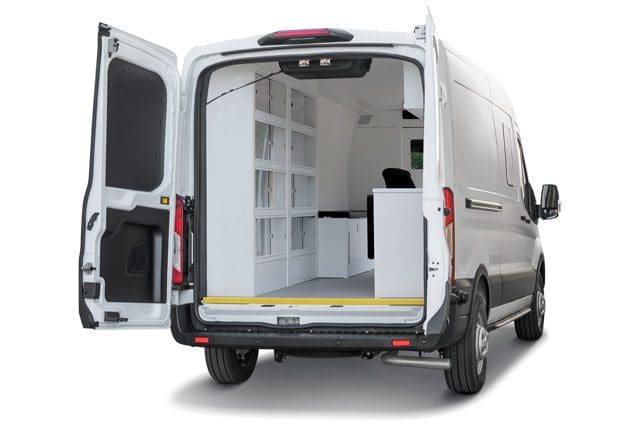Did you know that over 6.1 million people in the U.S. have opioid use disorder (OUD)? Between 1999 and 2020, more than 800,000 Americans lost their lives to drug overdoses, with opioids playing a huge role. It’s a growing crisis, and as an organization trying to help, you might feel overwhelmed. You know how important it is to provide real solutions, but the question is, how?
This is where learning about ASAM (American Society of Addiction Medicine) and medication assisted treatment (MAT) can be the first step in filling the gap and making a real difference. Without ASAM, more lives would be lost due to inadequate treatment for OUD, and there would be worsened public health outcomes because of the increased strain on healthcare systems.
Understanding the bigger picture will give you some clarity and steer you in the right direction to providing life-saving support to those battling OUD.
At AVAN Mobility, we’ve been making vehicles for the past ten years that help organizations like yours break down barriers to healthcare and transportation for patients in need of help. Our vehicles make it easier for people to get the care they need, and organizations like CalOptima have trusted our vehicles to provide that care.
In this article, you’ll learn exactly what ASAM is and how its guidelines shape the future of OUD treatment. You’ll also learn why medication assisted treatment is such a big game-changer in battling this epidemic.
ASAM: Who are they?
ASAM has been around since 1954, and they’re a major force in the fight against addiction. With more than 7,000 healthcare professionals on their team, they’re dedicated to helping people overcome substance use disorders, including opioid addiction.
ASAM is all about making sure people with addiction get the care they need. They focus on:
- Connecting healthcare workers so they can share ideas and resources
- Advocating for policies that make addiction treatment more accessible
- Educating doctors and healthcare providers about the best ways to treat addiction
- Treating those struggling with addiction, especially with opioid use disorder (OUD)
Their goal is simple: A future where prevention, treatment, and recovery are available to everyone. No one should be left behind when it comes to getting the help they need for addiction.
ASAM is also the go-to source for guidelines on opioid use disorder and medication assisted treatment. They create guidelines that are backed by research and proven methods. If your organization is working with people who have OUD, ASAM’s strategies can help you figure out the best way to support them.
So, what exactly is medication assisted treatment? In short, MAT combines FDA-approved medications, like methadone, buprenorphine, and naltrexone, with counseling and behavioral therapies. This approach helps manage withdrawal symptoms and gives people a better chance at long-term recovery.
Let’s take a look at an example of medication assisted treatment in jails and why finding better solutions is so important, both financially and logistically. Stay tuned for the next section.
Why is medication assisted treatment needed in U.S. prisons?
Did you know over 60% of prisoners in the U.S. have a substance use disorder? Many of them are struggling with opioid addiction, which is why MAT is so important in these scenarios. MAT helps people in prison with OUD by using the medications we mentioned earlier to manage cravings and withdrawal symptoms, making it easier for them to start recovery.
These medications are proven to work, but there’s a big problem: prisons aren’t set up to provide them easily. Because these drugs are so tightly controlled, they can’t be handed out inside most prisons. This creates a huge barrier for inmates who need this treatment.
Why is providing MAT in prisons so hard?
Getting medication assisted treatment to prisoners is not simple. Since most prisons don’t offer MAT on-site, inmates have to be taken to outside clinics every day. Here’s what happens:
- Prisoners are shackled and transported to a clinic
- They receive their daily medication
- They are transported back to prison
This has to happen every day. The cost of the medication itself is around $23 per day, but when you add in transportation, security, and everything else, the total cost skyrockets. Each trip is expensive and time-consuming, making it hard for prisons to keep up with the demand for treatment.
What if your organization could bring MAT directly to prisons?

Imagine if you could bring MAT right to prisons’ doors instead of taking inmates to outside clinics. This would make a big difference in how we handle OUD.
Here are six reasons it would be so ideal:
1. Save a lot of money: Bringing MAT to prisons could help avoid the high costs of transporting inmates to clinics. This means no more spending money on security and transportation for each trip to and from the clinic, which can add up to thousands of dollars every day.
2. Increased safety: Keeping inmates closer to the prison for treatment is safer. There’s no risk of something going wrong while moving them to and from clinics.
3. Less hassle with transportation: No more dealing with the stress of moving inmates, scheduling trips, and managing security. It’s much simpler to have the treatment come to the prison instead.
4. More reliable treatment: With MAT available at the prison, inmates can get their medication on time every day. This means they’re getting consistent care, which is better for their recovery.
5. Better for inmates’ well-being: Inmates won’t have to experience the stress and discomfort of daily transport. They’ll stay in a familiar environment, which can make their treatment easier.
6. Faster access to care: MAT at the prison means inmates can start their treatment right away without waiting for outside appointments. This leads to quicker recovery.
7. Less stigma: There’s often some stigma attached to medication assisted treatment, especially with prisoners. This can be fully avoided by bringing the treatment to the prison.
As you can see, bringing MAT to prison can improve treatment for opioid addiction, save money, and make things easier for everyone involved.
Learn more about MAT and treating OUD

You came to this article because you’re likely looking for better ways to provide MAT for opioid use disorders. We’ve looked at an example of how challenging it is to manage MAT with current methods and how bringing treatment directly to the prison could make a big difference.
At AVAN Mobility, we understand the challenges you face in providing effective treatment. Our mobile medical units could be the perfect solution to your MAT needs. These units can safely and securely deliver MAT directly to jails, removing the complicated and costly process of transporting inmates to outside clinics. With our mobile units, you can provide treatment right where it’s needed most without the headaches of traditional methods.
We take pride in being leaders in the industry, dedicated to finding innovative solutions that truly make a difference. If you have any questions or want to learn more about how our mobile medical units can help, click the button below to talk to a mobility expert. If you’re not ready to chat just yet, we have more resources available for you to explore.
Because the treatments for OUD are so highly regulated, you may be wondering how mobile medical units can keep them secure. Check out our article on how you keep a mobile medical unit secure for more information on that.
You might also be interested in our article on mobile overdose prevention vs. harm reduction centers. This is for organizations that are more involved with ensuring people don’t overdose on drugs.





